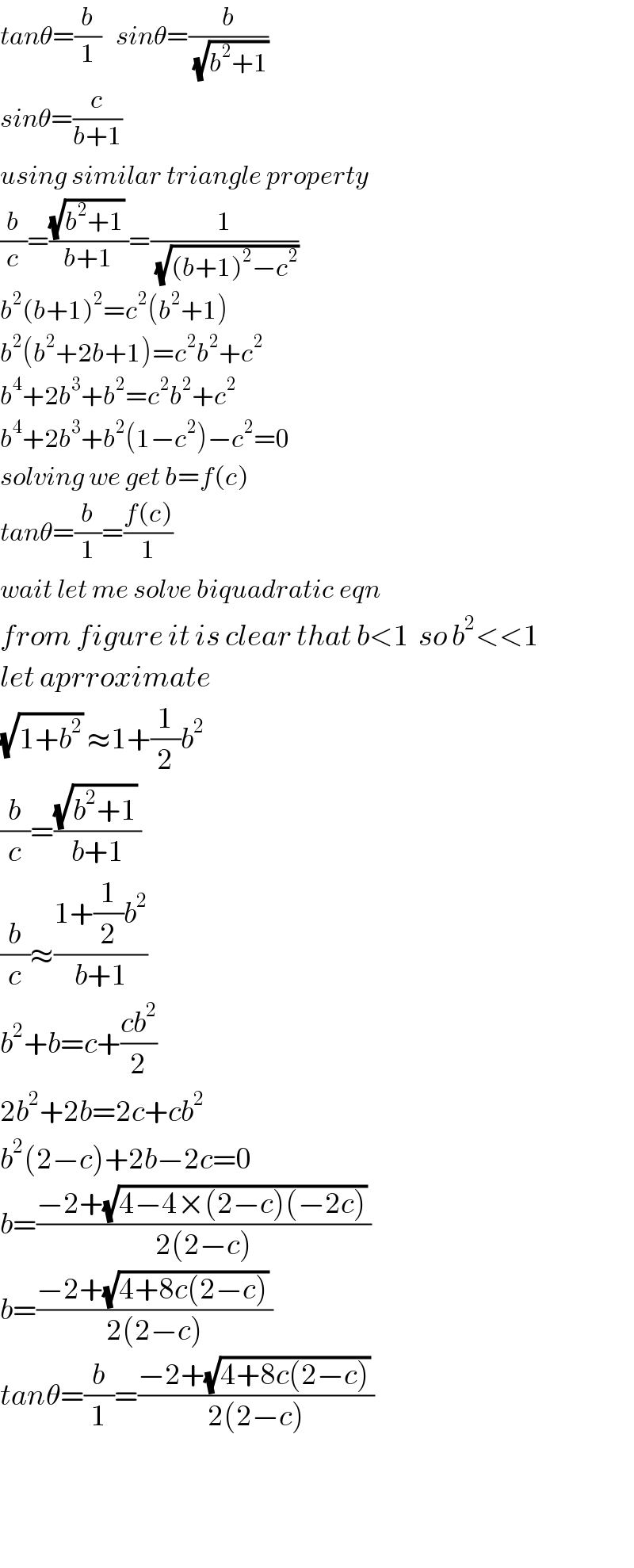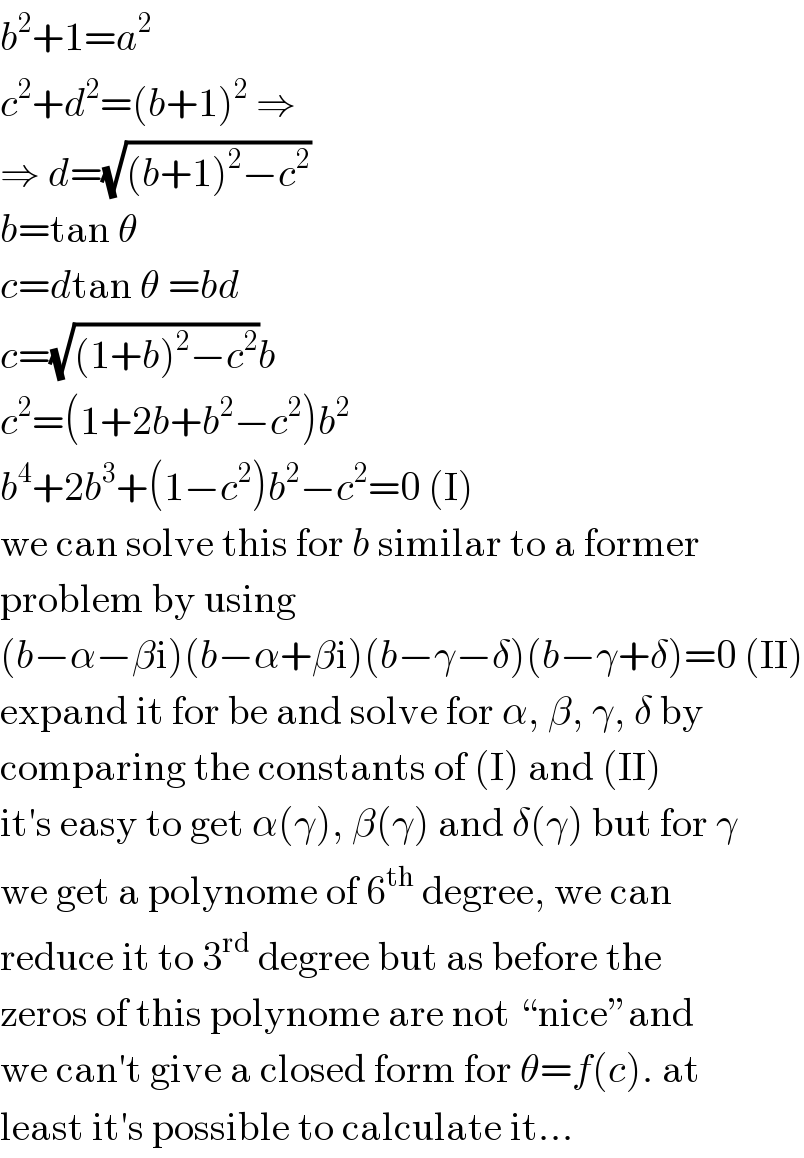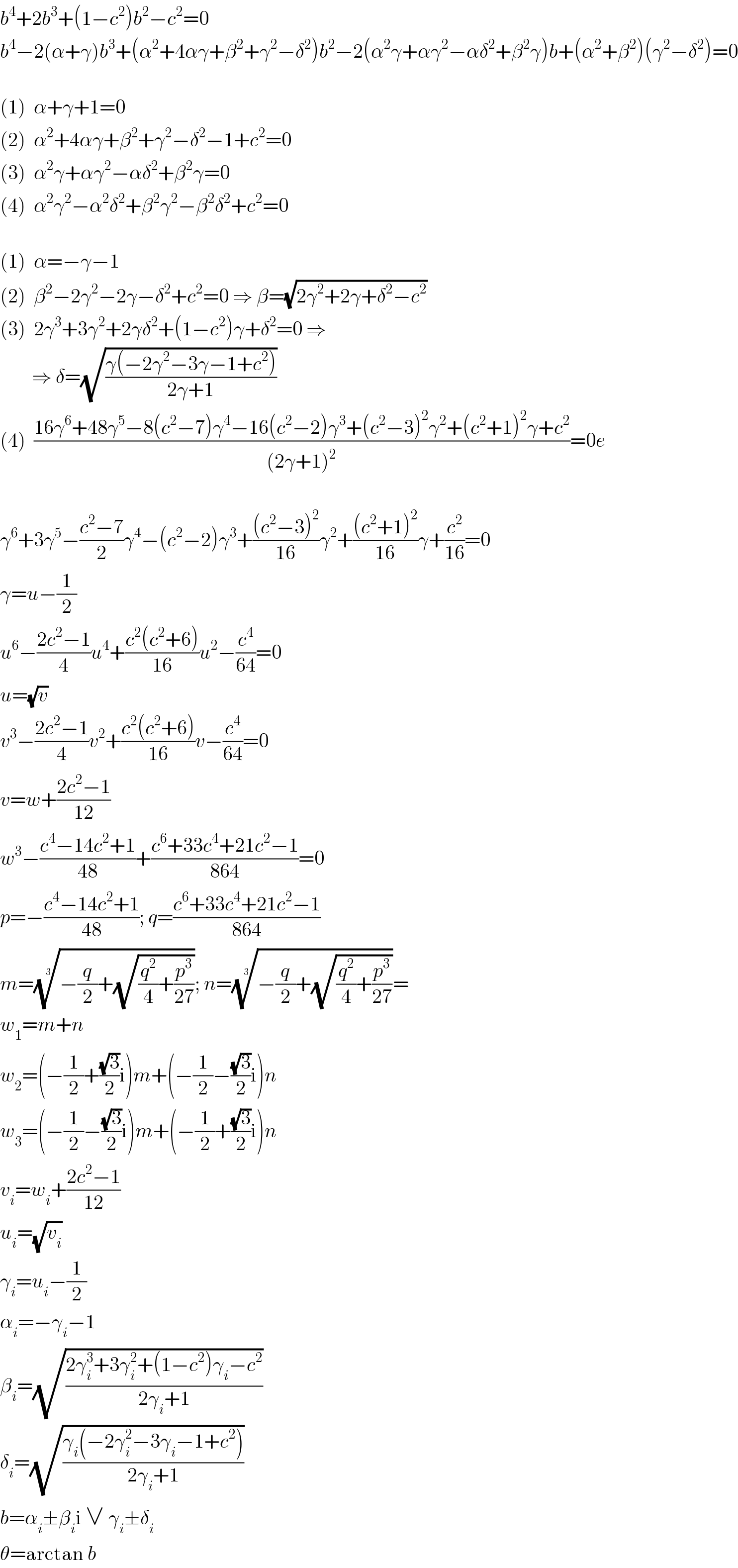
Question and Answers Forum
Question Number 38600 by ajfour last updated on 27/Jun/18

Commented by ajfour last updated on 27/Jun/18

Answered by tanmay.chaudhury50@gmail.com last updated on 27/Jun/18

Answered by behi83417@gmail.com last updated on 27/Jun/18

Answered by MJS last updated on 28/Jun/18

Commented by MJS last updated on 28/Jun/18

Commented by ajfour last updated on 29/Jun/18

Commented by MJS last updated on 29/Jun/18

